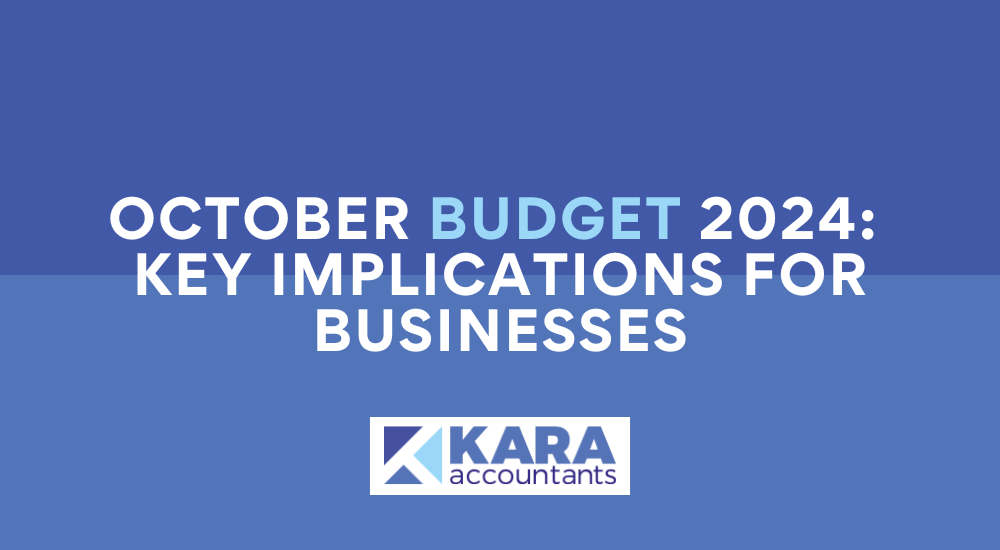
October Budget 2024: Key Implications for Businesses
The UK government’s October 2024 budget announcement has introduced several measures with direct implications for businesses across sectors. Below is a breakdown of the budget’s highlights, covering tax changes, incentives, and regulatory updates to help companies understand potential impacts and plan accordingly.
1. Corporate Tax Stability and Relief Measures
- Corporate Tax Rate: The government has maintained the corporate tax rate at 25%, bringing stability for businesses planning their long-term financial strategies. This continuation was positively received, as further increases could have squeezed post-tax profits.
- Investment Zones Expansion: More Investment Zones have been introduced, designed to stimulate economic activity in underdeveloped regions. Businesses operating in these zones benefit from tax relief on capital investments, lower business rates, and enhanced hiring subsidies, creating a favorable environment for expanding operations outside of metropolitan areas.
2. Incentives for Green and Digital Transformation
- Green Energy Incentives: Companies investing in renewable energy projects, such as solar, wind, and battery storage, will benefit from extended tax reliefs and access to low-interest loans. This is in line with the UK’s net-zero targets, encouraging businesses to transition to sustainable energy sources and reduce carbon footprints.
- Digital Transformation Tax Credits: Businesses undertaking digital modernisation projects—such as integrating AI, cybersecurity upgrades, or cloud infrastructure—will receive increased tax credits. These incentives are designed to enhance productivity and global competitiveness, especially among small to medium-sized enterprises (SMEs) seeking to upgrade their technology.
3. SME Relief and Tax Adjustments
- Business Rates Adjustments for SMEs: Recognising the strain of inflation on smaller companies, the budget includes measures to freeze business rates for SMEs in specific sectors, including retail and hospitality. This freeze aims to ease cost pressures and support recovery in these industries.
- Enhanced R&D Tax Credits: Small and medium-sized businesses focusing on research and development will see a modest increase in R&D tax credits. The government is placing a strong emphasis on innovation in fields like biotech, pharmaceuticals, and technology, hoping to drive growth through scientific and technological advancements.
4. Labor Market Reforms and Talent Retention
- Apprenticeship and Training Funding: To address skill shortages in industries like construction, technology, and healthcare, the budget allocates increased funding for apprenticeships and vocational training. For businesses, this translates to better access to skilled workers and reduced training costs.
- Talent Retention Tax Reliefs: In a move to counter high employee turnover, especially in the tech and healthcare sectors, companies providing training or additional benefits to retain talent will be eligible for tax deductions. This could ease recruitment costs and encourage businesses to focus on employee retention and development.
5. Adjustments to Business Regulations and Compliance Costs
- Digital Compliance Requirements: The government is pushing forward with its “digital compliance” agenda, requiring businesses to update digital filing systems to improve tax transparency and efficiency. Although there are initial compliance costs, the long-term goal is to simplify tax processes and reduce paperwork.
- New Import Tariffs on Non-Essential Goods: Import tariffs have been revised, especially targeting non-essential and luxury items. While businesses in import-heavy sectors will see higher costs, incentives for locally sourced materials aim to encourage domestic production.
This budget reflects the government’s focus on sustainable economic growth, digital advancement, and support for SMEs. For businesses, the emphasis on green investments, digital transformation, and talent retention opens new avenues for growth while maintaining tax stability. However, sectors reliant on imports and high-wage labor may need to adjust to higher costs.

This Post Has 0 Comments